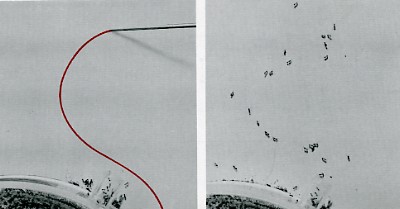

علم الكيمياء

تاريخ الكيمياء والعلماء المشاهير

التحاضير والتجارب الكيميائية

المخاطر والوقاية في الكيمياء

اخرى

مقالات متنوعة في علم الكيمياء

كيمياء عامة


الكيمياء التحليلية

مواضيع عامة في الكيمياء التحليلية

التحليل النوعي والكمي

التحليل الآلي (الطيفي)

طرق الفصل والتنقية


الكيمياء الحياتية

مواضيع عامة في الكيمياء الحياتية

الكاربوهيدرات

الاحماض الامينية والبروتينات

الانزيمات

الدهون

الاحماض النووية

الفيتامينات والمرافقات الانزيمية

الهرمونات


الكيمياء العضوية

مواضيع عامة في الكيمياء العضوية

الهايدروكاربونات

المركبات الوسطية وميكانيكيات التفاعلات العضوية

التشخيص العضوي

تجارب وتفاعلات في الكيمياء العضوية


الكيمياء الفيزيائية

مواضيع عامة في الكيمياء الفيزيائية

الكيمياء الحرارية

حركية التفاعلات الكيميائية

الكيمياء الكهربائية


الكيمياء اللاعضوية

مواضيع عامة في الكيمياء اللاعضوية

الجدول الدوري وخواص العناصر

نظريات التآصر الكيميائي

كيمياء العناصر الانتقالية ومركباتها المعقدة


مواضيع اخرى في الكيمياء

كيمياء النانو

الكيمياء السريرية

الكيمياء الطبية والدوائية

كيمياء الاغذية والنواتج الطبيعية

الكيمياء الجنائية


الكيمياء الصناعية

البترو كيمياويات

الكيمياء الخضراء

كيمياء البيئة

كيمياء البوليمرات

مواضيع عامة في الكيمياء الصناعية

الكيمياء الاشعاعية والنووية
Pheromones in Insects
المؤلف:
LibreTexts Project
المصدر:
................
الجزء والصفحة:
.................
13-1-2020
1171
Pheromones in Insects
Alarm Pheromone: When an ant is disturbed, it releases a pheromone that can be detected by other ants several centimeters away. They are attracted by low concentrations of the pheromone and begin to move toward the region of increasing concentration. As they get nearer to their disturbed nestmate, their response changes to one of alarm. The higher concentration causes them to run about as they work to remedy the disturbance. Unless additional amounts of the alarm pheromone are released, it soon dissipates. This ensures that once the emergency is over, the ants return quietly to their former occupations. Honeybees also have an alarm pheromone (which is a good thing not to elicit around a colony of "Africanized" bees).
Trail Pheromone: Certain ants, as they return to the nest with food, lay down a trail pheromone. This trail attracts and guides other ants to the food. It is continually renewed as long as the food holds out. When the supply begins to dwindle, trailmaking ceases. The trail pheromone evaporates quickly so other ants stop coming to the site and are not confused by old trails when food is found elsewhere. And at least in one species of ant, trails that no longer lead to food are also marked with a repellant pheromone.

Figure 1.1: Trail pheromone
A stick treated with the trail pheromone of an ant (left) can be used to make an artificial trail which is followed closely by other ants emerging from their nest (right). The trail will not be maintained by other ants unless food is placed at its end. (Photos courtesy of Sol Mednick and Scientific American).
Queen Pheromone: Honeybee queens spend their lives literally surrounded by a retinue of worker bees. The queen emits a pheromone that is a complex mixture of unsaturated hydrocarbons, fatty acids, and other organic molecules. Among its effects:
- inducing the workers to feed and groom her
- inhibiting the workers from building queen cells and rearing new queens
- inhibiting ovary development in the workers
 الاكثر قراءة في اخرى
الاكثر قراءة في اخرى
 اخر الاخبار
اخر الاخبار
اخبار العتبة العباسية المقدسة

الآخبار الصحية















 قسم الشؤون الفكرية يصدر كتاباً يوثق تاريخ السدانة في العتبة العباسية المقدسة
قسم الشؤون الفكرية يصدر كتاباً يوثق تاريخ السدانة في العتبة العباسية المقدسة "المهمة".. إصدار قصصي يوثّق القصص الفائزة في مسابقة فتوى الدفاع المقدسة للقصة القصيرة
"المهمة".. إصدار قصصي يوثّق القصص الفائزة في مسابقة فتوى الدفاع المقدسة للقصة القصيرة (نوافذ).. إصدار أدبي يوثق القصص الفائزة في مسابقة الإمام العسكري (عليه السلام)
(نوافذ).. إصدار أدبي يوثق القصص الفائزة في مسابقة الإمام العسكري (عليه السلام)


















